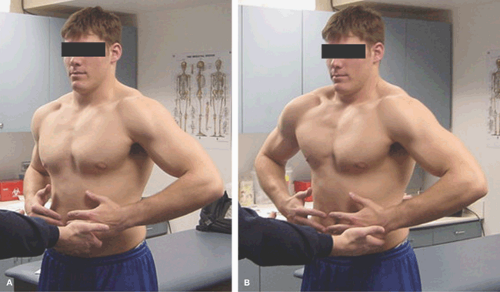Subscapularis Repair: Open Surgical Technique
Sumant G. Krishnan MD
Scott D. Pennington MD
Wayne Z. Burkhead Jr MD
History of the Technique
The subscapularis muscle is a strong internal rotator of the humerus, especially when the arm is in a position of abduction. It also functions as a dynamic stabilizer of the glenohumeral joint. In concert with the other rotator cuff muscles (especially the infraspinatus), the subscapularis depresses the humeral head, allowing the deltoid to elevate the arm as part of the biomechanical force-couple required for active anterior elevation.1
The first report documenting the existence of a subscapularis tendon rupture was by Smith2,3 in 1834, who documented rotator cuff and associated subscapularis tendon ruptures in seven cadaveric specimens. The first documented repair of a subscapularis rupture came almost a century later. Hauser,4 in 1954, described a repair technique using bone troughs and transosseous sutures through bone tunnels for the subscapularis tendon. Despite this recognition, subscapularis tendon ruptures as an isolated entity received little attention until the past two decades. Gerber and Krushell5 described a cohort of patients who sustained an isolated disruption of the subscapularis as a result of a traumatic forced external rotation of the involved arm without a concomitant glenohumeral joint dislocation. The success of the operative treatment described by Gerber et al.6 for this unique injury has led others to confirm the disability associated with, efficacy of early recognition for, and success of surgical treatment for this condition.
Clinical Presentation and Evaluation
Patients presenting with an isolated tear of the subscapularis tendon typically are younger than patients with the more common degenerative tendinopathy and tearing of the remainder of the rotator cuff.5,7,8 Most of these patients have suffered a traumatic injury. There are four documented traumatic mechanisms of injury for isolated rupture of the subscapularis tendon9,10:
Fall directly on the shoulder not associated with a dislocation;
Rupture associated with an anterior dislocation of the shoulder;
Violent external rotation injury with the arm in an adducted position;
Violent hyperextension injury.
Patients usually present with night pain and pain that produces significant functional limitations. They often complain of pain both with the arm at the side and with elevation. Another common complaint is pain and weakness when reaching behind for a wallet in a pants pocket. In the largest reported series, all patients documented pain with the arm below the shoulder, pain with the arm in the overhead position, anterior shoulder pain at night, and weakness of the upper extremity.6
Physical Examination
Physical examination of the patient with a subscapularis tendon rupture demonstrates increased external rotation (usually by 10 degrees to 30 degrees) compared to the contralateral side. A positive liftoff or “belly press” test is also present (Fig. 11-1A,B). Recent electromyographic evidence demonstrates that the liftoff appears to preferentially isolate the lower portion of the subscapularis, and the belly press isolates the upper portion of the subscapularis.11
Imaging
Plain radiographs are usually normal, though in the chronic case the axillary view may demonstrate static anterior subluxation.12,13,14 Magnetic resonance imaging (MRI) or computed tomography (CT) with arthrographic dye are the gold standard tests for radiographic confirmation of the subscapularis tendon tear.15,16 MRI demonstrates the condition of the tendon, partial or full thickness tearing, and atrophy and fatty degeneration of the muscle.
Stay updated, free articles. Join our Telegram channel

Full access? Get Clinical Tree









